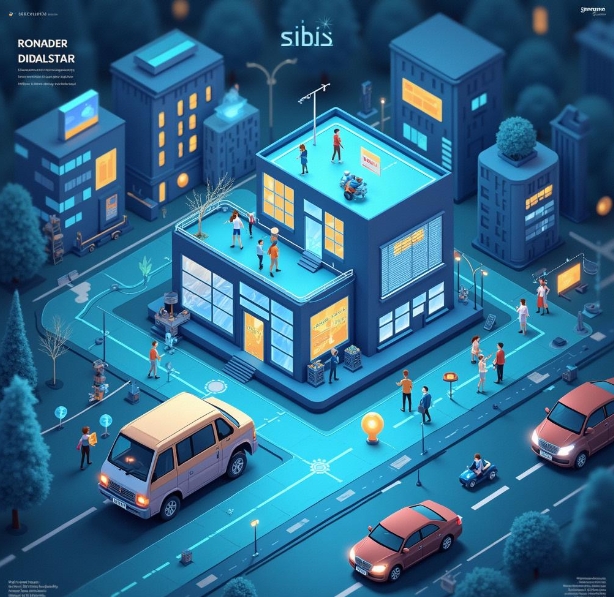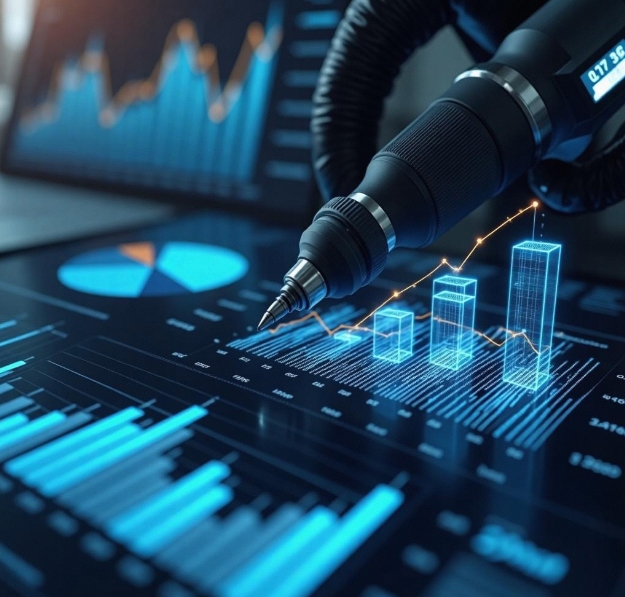Machine Learning Development and Writing: Driving Technological Innovation in the Intelligent Era
- latest articles
- 1.DApp Development & Customization: Merging Diverse Market Needs with User Experience 2.Analysis of the Core Technical System in DApp Project Development 3.How to achieve cross-chain interoperability in Web3 projects? 4.How does the tokenization of points reconstruct the e-commerce ecosystem? 5.How to Set and Track Data Metrics for a Points Mall? 6.What is DApp Development? Core Concepts and Technical Analysis 7.Inventory of commonly used Web3 development tools and usage tips 8.Development of a Distribution System Integrated with Social E-commerce 9.Six Key Steps for Businesses to Build a Points Mall System 10.What is DApp Development? A Comprehensive Guide from Concept to Implementation
- Popular Articles
- 1.Future Trends and Technology Predictions for APP Development in 2025 2.Analysis of the DeFi Ecosystem: How Developers Can Participate in Decentralized Finance Innovation 3.From Zero to One: How PI Mall Revolutionizes the Traditional E-commerce Model 4.DAPP Development | Best Practices for Professional Customization and Rapid Launch 5.Recommended by the Web3 developer community: the most noteworthy forums and resources 6.From Cloud Computing to Computing Power Leasing: Building a Flexible and Scalable Computing Resource Platform 7.Shared Bike System APP: The Convenient Choice in the Era of Smart Travel 8.How to Develop a Successful Douyin Mini Program: Technical Architecture and Best Practices 9.How to Create a Successful Dating App: From Needs Analysis to User Experience Design 10.From Design to Development: The Complete Process of Bringing an APP Idea to Life
With the rapid advancement of technology, artificial intelligence (AI) has evolved from a concept in science fiction into practical applications, particularly in the field of Machine Learning (ML). As a crucial pillar of the intelligent era, machine learning is not only widely applied across various industries but also plays a significant role in driving technological innovation and industrial transformation. This article will explore in detail the importance of machine learning development, how technological innovation propels the development of the intelligent era, and the potential of machine learning in practical applications.
I. Fundamental Concepts of Machine Learning
Machine learning is an important branch of artificial intelligence that enables computers to automatically learn and make decisions through data analysis and pattern recognition. Unlike traditional programming methods, machine learning does not require explicit programming instructions. Instead, by inputting large amounts of data, the computer self-learns based on the characteristics and patterns of the data, ultimately drawing conclusions or making predictions. The core idea of machine learning is to equip computers with human-like learning capabilities, thereby achieving automated processing.
There are several main types of machine learning:
1. Supervised Learning: In supervised learning, algorithms learn from labeled data to make predictions. The training data includes inputs and corresponding correct outputs, and the algorithm continuously adjusts the model until it can accurately predict new data.
2. Unsupervised Learning: Unsupervised learning differs in that the algorithm only receives input data without corresponding labels. Its goal is to discover underlying patterns or structures in the data, such as cluster analysis and association rule mining.
3. Reinforcement Learning: Reinforcement learning involves learning through interaction with the environment and optimizing behavioral decisions via reward and punishment mechanisms. It is widely used in robotics control and adaptive systems.
The applications of machine learning have permeated almost all industries, including finance, healthcare, manufacturing, education, and entertainment. It is not only a driving force of the intelligent era but also a significant source of technological innovation.

II. The Importance of Machine Learning Development
Machine learning development is a complex and highly challenging task. Developers need a deep understanding of algorithms and models, along with practical experience, to design and implement efficient machine learning systems. This development work involves not only writing code but also steps such as selecting appropriate algorithms, processing and cleaning data, and training and optimizing models.
1. Data Processing and Feature Engineering
In machine learning, data is the most critical element. Whether in supervised or unsupervised learning, the quality and quantity of data directly affect the model's effectiveness and performance. Therefore, data processing and feature engineering are essential steps in machine learning development. The goal of feature engineering is to extract the most valuable information from raw data to improve the model's accuracy and efficiency.
For example, in image recognition tasks, developers need to extract features such as color, shape, and texture from images; in natural language processing tasks, features like vocabulary and syntactic structure need to be extracted from text.
2. Selecting Appropriate Algorithms and Models
One of the most critical steps in machine learning development is selecting the right algorithms and models. Different tasks require different machine learning algorithms. For instance, common algorithms for classification problems include decision trees, support vector machines (SVM), and random forests; for regression problems, linear regression and ridge regression are often used; for generative models, Generative Adversarial Networks (GAN) might be chosen.
Selecting the appropriate algorithms and models depends not only on the developer's experience but also on a deep understanding of the problem. In machine learning development, experimentation and tuning are unavoidable processes, requiring developers to continuously try different algorithms and models to find the optimal solution.
3. Model Training and Optimization
Model training is another crucial step in machine learning development. The training process involves feeding input data and target output data into the model and continuously adjusting the model's parameters to make the predictions closer to the actual values. Training typically requires substantial computational resources, especially for deep learning models, which may need high-performance computing equipment.
During training, developers must also focus on avoiding overfitting and underfitting. Overfitting occurs when the model performs exceptionally well on training data but poorly on new data, while underfitting happens when the model fails to adequately fit the data, leading to poor predictive ability. Thus, optimizing the model's capability is a core task in machine learning development.
4. Continuous Improvement and Iteration
The development of machine learning models is not a one-time effort; it often requires continuous improvement and iteration. In practical applications, developers adjust models based on new data and requirements to ensure they maintain high performance in a changing environment. This process of continuous improvement reflects the dynamic nature of machine learning development.
III. Machine Learning and Technological Innovation
The rapid development of machine learning has not only advanced artificial intelligence technology but also driven technological innovation across multiple fields. Below are some innovative applications of machine learning in various domains.
1. Intelligent Healthcare
In the healthcare field, machine learning is widely used for disease diagnosis, personalized treatment recommendations, medical image analysis, and more. By analyzing vast amounts of medical records, medical images, and genetic information, machine learning can assist doctors in making more accurate diagnoses, predicting patient disease progression, and even aiding in the development of new drugs.
For example, using machine learning to analyze medical images can help doctors detect tumors and other lesions earlier, improving surgical success rates. Additionally, machine learning can analyze patients' historical data to create personalized treatment plans, thereby achieving precision medicine.
2. Financial Technology
The financial industry is another hotspot for machine learning applications. By analyzing massive amounts of financial data, machine learning helps financial institutions with risk assessment, credit scoring, stock market prediction, and other tasks. In the investment sector, machine learning can analyze historical market data to predict price trends of stocks, funds, etc., thereby assisting in investment decisions.
Moreover, machine learning plays a vital role in financial fraud prevention. By analyzing transaction data in real-time, machine learning helps financial institutions promptly identify anomalous transactions, preventing fraud and money laundering.
3. Smart Manufacturing
In manufacturing, machine learning is used to optimize production processes, improve product quality, and reduce costs. By analyzing data generated during production, machine learning can help predict equipment failures, avoiding production halts. Additionally, machine learning enables intelligent quality control, promptly identifying product defects and enhancing production efficiency and product qualification rates.
4. Autonomous Driving
Autonomous driving is a significant application direction for current machine learning technology. By analyzing vast amounts of traffic data, vehicle status, and environmental information, machine learning helps autonomous driving systems make intelligent decisions. Using technologies like deep learning, autonomous vehicles can recognize road conditions, pedestrians, obstacles, etc., in real-time, making safe and precise driving decisions and thus driving a technological revolution in the transportation sector.
IV. The Machine Learning-Driven Intelligent Era
The arrival of the intelligent era marks the deep integration of technologies such as computers, the internet, and artificial intelligence, bringing unprecedented changes. As one of the core technologies, machine learning not only drives technological innovation in many fields but also infuses intelligent elements into various industries, gradually steering society toward greater automation and intelligence.
In the intelligent era, the application of machine learning will further deepen, and the pace of technological innovation will continue to accelerate. For example, in industrial production, the combination of machine learning and Internet of Things (IoT) technology will automate and intelligentize production processes; in daily life, intelligent assistants and personalized recommendation systems will make people's lives more convenient and efficient.
V. Conclusion
Machine learning development is a core driving force of the intelligent era, not only changing the direction of technological development but also promoting technological innovation across various industries. By deeply learning and applying machine learning technologies, we can achieve more intelligent and efficient production and service methods, creating more innovative solutions. As technology continues to develop and improve, machine learning will play an increasingly important role in the future intelligent society, becoming a significant force driving social progress.
-

How does artificial intelligence technology transform the operational models of modern enterprises?
In the wave of the digital era, artificial intelligence (AI) technology has tran···
-

How to Utilize Artificial Intelligence for Precision Medicine and Health Management
With the rapid advancement of technology, artificial intelligence (AI) has demon···
-

Integration and Application of Artificial Intelligence and Robotics
In today's era of rapid technological advancement, the integration of artificial···

 Blockchain
Blockchain










